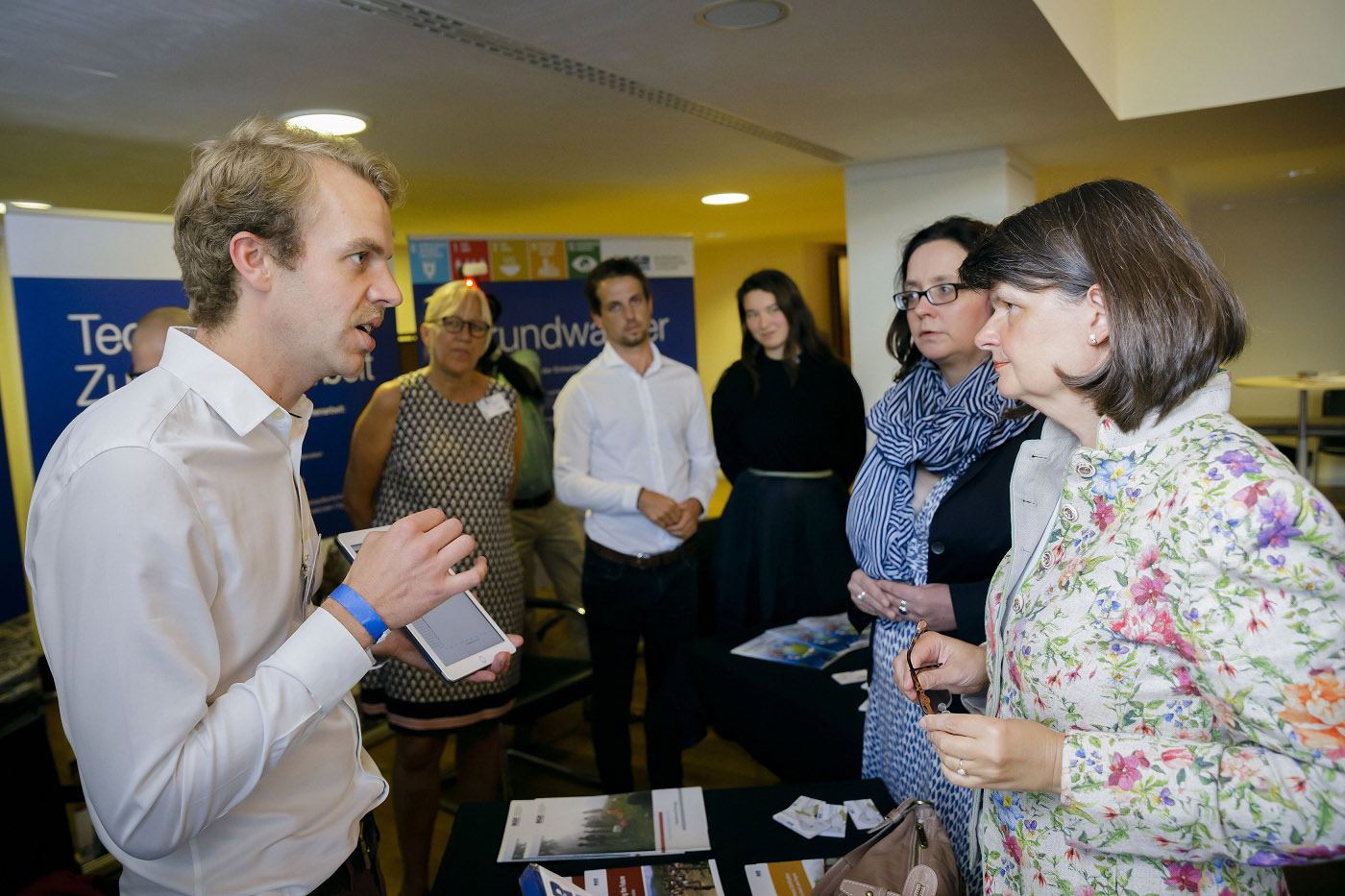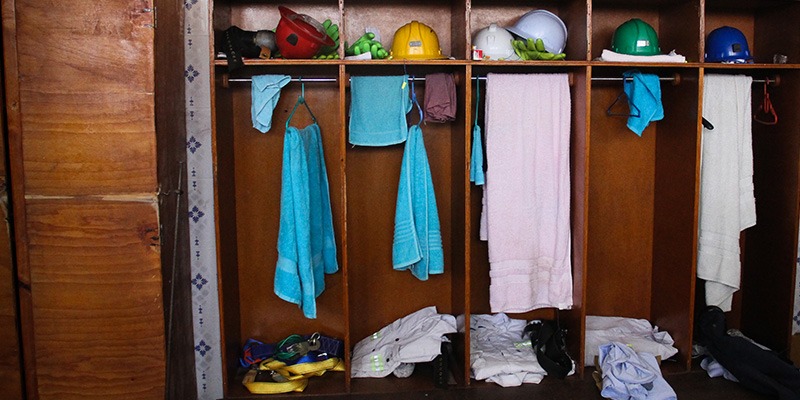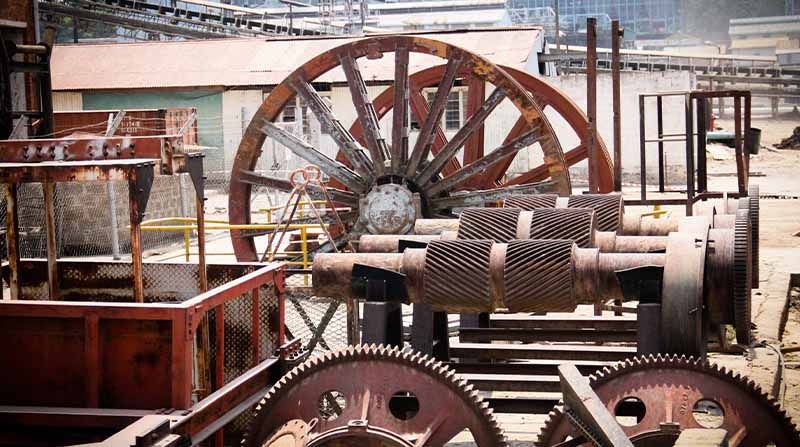

BGR opens up local value creation potential in African copper and cobalt mining using Tableau
Evidence-based localization and infrastructure planning for political leaders
Optimization of procurement and supplier strategies for mining companies
New insights into rewarding investment areas for mining suppliers
As part of the Federal Ministry of Economics and Energy, the Federal Institute for Geosciences and Natural Resources (BGR) is the Federal Government's central geoscientific advisory body. In a special project within the "Extractives and Development" sector programme, which is financed by the Federal Ministry for Economic Cooperation and Development, BGR employees analyse the expenditure structure of copper and cobalt mines in the Democratic Republic of Congo and Zambia , the so-called Copper belt. The aim is to visualize the local demand volumes tangible for the individual purchase categories of the mines so that the political leaders of these states, but also local and international suppliers, can derive actionable recommendations from them. With Tableau, the BGR team analyses the annual purchasing volume of the mining companies since 2013 in 34 product and service categories. The results are available to all interested parties in the form of interactive graphics and evaluations using Tableau Public on various websites. The resulting estimation of purchasing volumes in the various categories and markets enables local politicians to implement their localization efforts and infrastructure planning in a more targeted and thus more efficient manner, allows mining companies to better understand their procurement activities and optimize their supplier strategies, and provides potential local and international mining suppliers with information on worthwhile investment areas in order to develop them alone or in the form of joint ventures.
Development of promising localization potentials and simplified infrastructure planning for policy-makers



The graphical exploration of complex data often provides important insights at first glance.
As part of its development policy commitment to local value creation in the raw materials sector, the Federal Institute for Geosciences and Natural Resources (BGR) developed a model for identifying local investment opportunities in raw materials projects. The LION (Local Investment Opportunities in Natural resources projects) tool analyses data from a field study conducted in the summer of 2018 on the cash operating costs of copper and cobalt mines in Zambia and the Democratic Republic of Congo and their percentage allocation to 34 specific purchasing categories such as energy, water, fuel and lubricants, spare parts and equipment, sulphur and sulphuric acid, abrasives, maintenance and repair, tyres, construction and related services, food and beverages, personnel services or telecommunications. The total purchasing volume examined amounts to over US$ 5 billion annually and represents an enormous economic potential for local and international suppliers in the Copperbelt. In addition, copper and cobalt are indispensable elements of the global energy transition. Their cost-effective production is therefore of a global concern. "The LION tool blends together publicly available data on mine production volumes and cash operating costs with the cost split, that is the percentage spent on 34 different product categories” explains Nils Handler, research associate at BGR.
Since the LION tool has been made available over the Internet on various websites, access rates have increased tenfold
Prior to using Tableau, the BGR sector program had to send around various excel-sheets containing this type of information. Apart from being a very cumbersome process, the reach of this type of dissemination was very limited, reaching only a relatively small number of beneficiaries. "The graphical exploration of complex data often provides important insights at first glance. Geo-referencing of mines on maps for example is very insightful. It is one example of an appealing data visualization, which anybody with an internet connection can access. Having reached more than 1200 hits on our Tableau Public visualizations for the Copper Belt, and half that number for our gold model for West Africa evidences the increased reach of our work outputs. The LION tool developed by the sector program 'Extractives and Development' delivers modelled market data and context information via BGR's Tableau Public platform. It can be efficiently updated with new cost data and is easy to use. Users can interactively select different years, countries or specific categories to explore them in detail. Governments, private companies and support agencies better understand the scope and nature of the markets for mine products and services using the LION model's estimates of procurement costs. As a result local politicians can identify the most promising product categories in terms of volume and logistics for their localization efforts. This allows them to use limited public resources for projects with the highest expected return on investment. This knowledge can also be used to better plan and execute investments in utilities, roads and other infrastructure.
Higher market transparency sets the stage for evidence-based policies and simplifies investment decisions
The tool provides local suppliers with an estimate of the size of various procurement markets, their evolution over time and potential risk factors. The LION tool can help coordinate different suppliers so that they spread out their activities across different product categories instead of all competing for the same share of the pie. A comparison of their product range with the procurement demand categories helps to identify business opportunities in existing or new procurement markets and to assess their prospects of success. LION also provides international suppliers with an overview of the size and segmentation of demand markets, providing them with indications of an effective bidding strategy, promising joint ventures or promising investments. Donors and public institutions, such as chambers of commerce, industry associations or commercial banks, can use the tool as part of their investment decisions or to focus their support programmes.
What was most appealing to us regarding Tableau was not only the many intuitive features to analyse data but also to put the rich graphs and charts at the fingertips of an unlimited number of beneficiaries through the web.
Optimization of procurement and supplier strategies of mine operators
LION provides mining companies with a better understanding of the overall market for various procurement products and services in a given country. This helps them plan and implement efficient supplier strategies, create opportunities for potential cost savings by shifting to local suppliers, and encourage the formation of purchasing associations with other mine operators to increase their market power and achieve savings through larger purchasing volumes. Overall, the availability of the BGR's new analyses has been well-received by different audiences when presented at international mining conferences and the OECD, as well as senior policy makers. This is shown by the feedback in many personal discussions between the Extractives and Development sector programme and government officials as well as representatives from the industry. "Since the LION tool is available via the Internet on various websites, the access rates have increased tenfold," reports Nils Handler on the enormous increase in reach. "Policy makers even expressed the wish to properly manage the tool under their own direction. Currently we are planning to include Congolese gold mining into the LION model.”